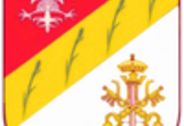Trzcianne

Gmina Trzcianne promotes nature and ecology, as nature did not skimp its values here. The gmina lies between the Biebrza and the Narew, in the heart of the Biebrza National Park and over a half of its territory is strictly protected under Natura 2000 network. It is also the land of great historic and cultural heritage, as well as still preserved customs and culinary traditions. The first traces of the local settlement (the one in Niewiarowo) date back to the 13th century, and the parish in Trzcianne is over 500 years old.
Trzcianne is often called the ‘pearl of the Biebrza’, because it is here that you can admire the greatest natural values of the Biebrza Valley: swamps, peat bogs, alder forests. Over 20% of the area of the gmina is covered by wonderful pine – spruce forests and birch groves. A paradise for tourists and naturalists, especially ornithologists. There are elks, beavers, even wolves, but the largest richness of this land isthe diversity of birds – those that have their nesting sites here and those that stay in the Biebrza Valley on their way from Siberia to Africa. Among them there are really unique ornithological treasures, such as greater spotted eagle, the most endangered European species of eagle. The last European nesting sites of these birds are located here, in the Biebrza Valley, on the territory of Gmina Trzcianne. There is also lesser spotted eagle, white-tailed eagle, ruff, black-tailed godwit, black grouse, crane, black stork, dunlin and Eurasian eagle-owl. Vast area of swamp meadows by the Biebrza is the largest Polish swampy region under protection. They are the refuge of birds endangered with extinction, inscribed on the Special Concern Species List of the EU. The gmina has adopted the symbol of bond with nature – it is an aquatic warbler, a small bird, treasure of the Biebrza, which is – according to foresters – more likely to be heard than seen. Aquatic warbler is a real rarity among the family of sparrows. In the 19th century, the species was very common, but now is the most endangered species of sparrow bird of passage in Europe. The future of aquatic warbler depends on the conditions in which it will live in the Biebrza Valley, as it is – apart from swampy areas of Belarus and Ukraine – the only place in the world where we can see this bird.
Tourists can choose from several dozen kilometres of tourist trails. They can use a canoe rally on the Biebrza which is considered one of the most picturesque canoe trails in Poland, as well as equine tourism, cycling or hiking. The local agritourism farms also offer carriage rides.
Trzcianne is often called the ‘pearl of the Biebrza’, because it is here that you can admire the greatest natural values of the Biebrza Valley: swamps, peat bogs, alder forests. Over 20% of the area of the gmina is covered by wonderful pine – spruce forests and birch groves. A paradise for tourists and naturalists, especially ornithologists. There are elks, beavers, even wolves, but the largest richness of this land isthe diversity of birds – those that have their nesting sites here and those that stay in the Biebrza Valley on their way from Siberia to Africa. Among them there are really unique ornithological treasures, such as greater spotted eagle, the most endangered European species of eagle. The last European nesting sites of these birds are located here, in the Biebrza Valley, on the territory of Gmina Trzcianne. There is also lesser spotted eagle, white-tailed eagle, ruff, black-tailed godwit, black grouse, crane, black stork, dunlin and Eurasian eagle-owl. Vast area of swamp meadows by the Biebrza is the largest Polish swampy region under protection. They are the refuge of birds endangered with extinction, inscribed on the Special Concern Species List of the EU. The gmina has adopted the symbol of bond with nature – it is an aquatic warbler, a small bird, treasure of the Biebrza, which is – according to foresters – more likely to be heard than seen. Aquatic warbler is a real rarity among the family of sparrows. In the 19th century, the species was very common, but now is the most endangered species of sparrow bird of passage in Europe. The future of aquatic warbler depends on the conditions in which it will live in the Biebrza Valley, as it is – apart from swampy areas of Belarus and Ukraine – the only place in the world where we can see this bird.
Tourists can choose from several dozen kilometres of tourist trails. They can use a canoe rally on the Biebrza which is considered one of the most picturesque canoe trails in Poland, as well as equine tourism, cycling or hiking. The local agritourism farms also offer carriage rides.











